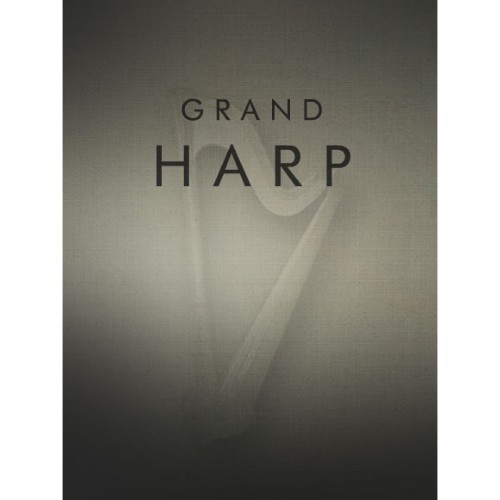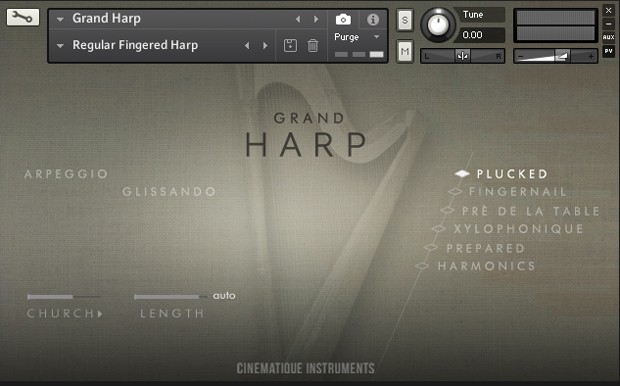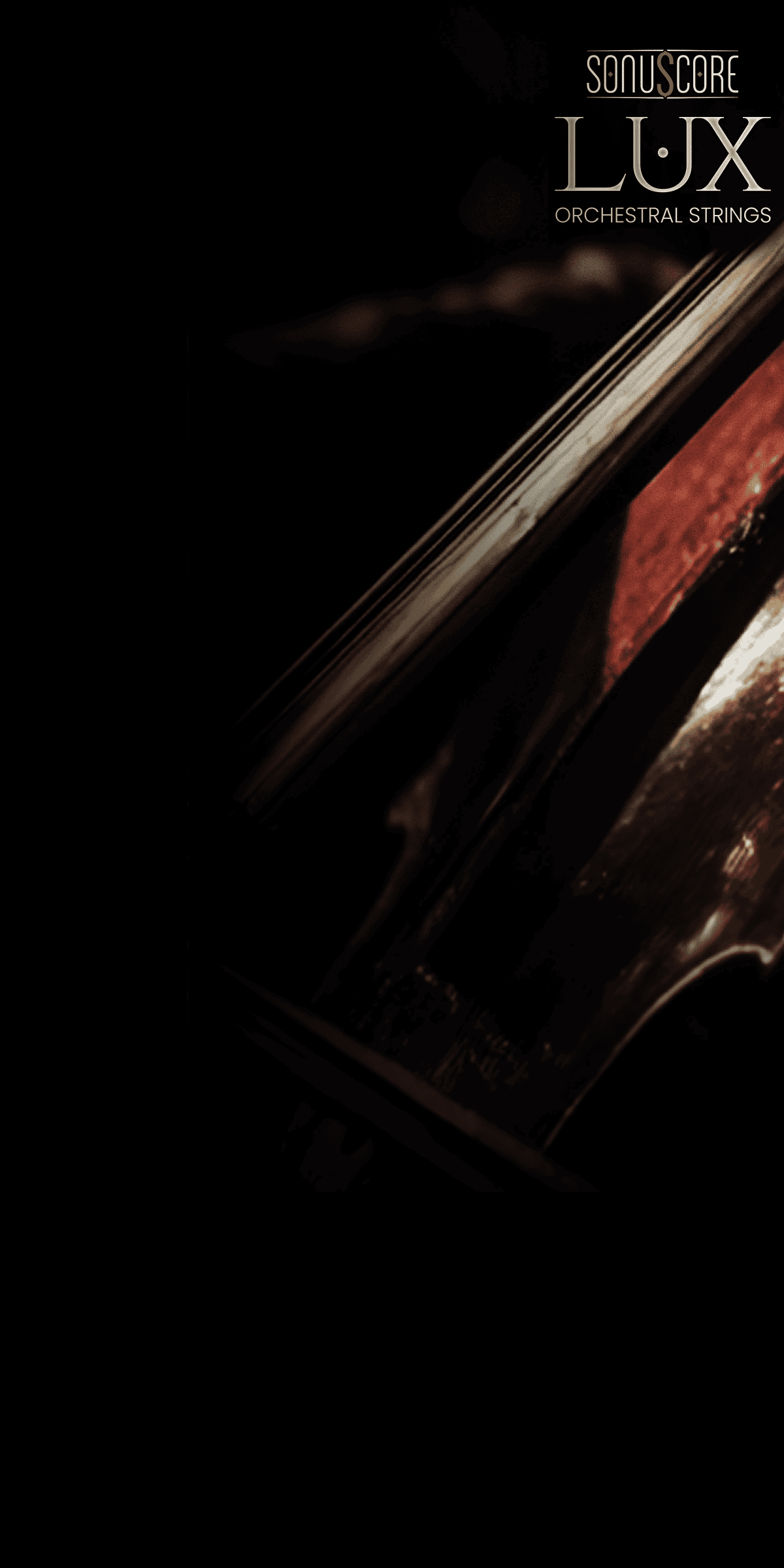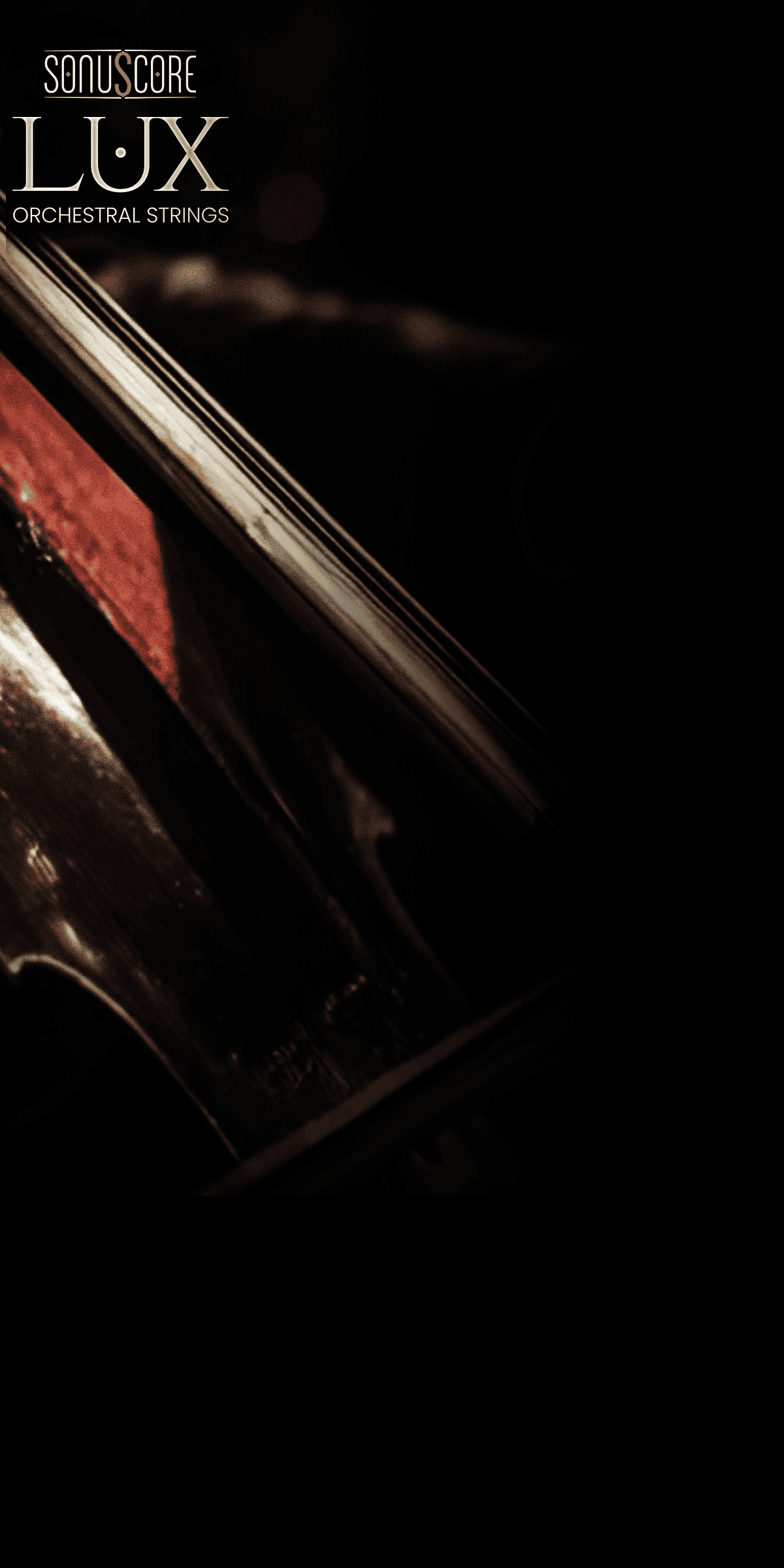

Silky Symphonic Nylon
The Grand Harp or better known as Concert Harp or Pedal harp is a large modern harp, designed primarily for classical music. The Grand Harp is a descendant of ancient harps such as a Celtic Nylon Harp. The harp found its early orchestral use as a solo instrument in concerti by many baroque and classical composers. It began to be used in symphonic music by Hector Berlioz.
The Grand Harp has a wide range of tones which is six and a half octaves (47 strings) starting typically from C 1 and ends up at G 7. The lowest strings are made of copper or steel-wound nylon, the middle-lower strings of gut, and the middle to highest of nylon, or more or all gut.
Articulations
The normal and typical way to play the Grand Harp is to play it with the fingertips of the first four fingers, but there are a lot more kinds of playing techniques available. In this version of the Grand Harp CI concentrated on six different articulations which are:
-
Plucked: Plucking the strings with the fingers is the principal technique.
-
Fingernail: That articulations creates a sharp and slightly penetrating sound. You produce that by plucking the strings with fingernails.
-
Prè de la Table: Prè de la table produces a dry and nasal sound. The sound is sometimes compared to that of the Japanese koto or the guitar. To produce a pré de la table sound the fingers pluck the string in a normal manner but close to the soundboard.
-
Xylophonique: Xylophonique is a muted sound with a clearly distinguished pitch. It sounds wooden dry and percussive. To produce xylophonic sounds one hand mutes the strings by pressing them with the fingers close to the soundboard. The other hand plays the strings normally.
-
Prepared: This prepared articulation produces a dissonant and percussive sounds which is best suitable to produce avant-garde or experimental sounds and noises. We prepared all the the strings with brackets and paper which had the effect that the sound was muted as well as a weird vibrating noise was added to it.
-
Harmonics: The Harmonics (flageolet) gives a very warm and gentle sound. It is a popular effect in harp music.

The Content
As always CI set a high focus on capturing the notes in a very realistic and organic way, thus they recorded the Grand Harp with several big condenser around the instrument. All main articulations are provided in four times round robins and up to 5 velocity layer, recorded in stereo 24 Bit. Only the Harmonics articulation was recorded in one round robin. The Grand Harp comes up with a very gentle and warm feel. It sounds realistically and inspiring.
Cinematique Instruments included all six articulations in one patch so that the user can easily and quickly change the articulation. You can do that either by mouse or keyswitches. Furthermore they added reverb and sustain control sliders as well as a tiny but powerful arpeggio with a separate voicing options and a very useful glissando mode. Finally CI added an auto-velocity button which sets the note length automatically. This is extremely handsome.
Grand Harp requires the full version of Kontakt 5.6

Please notice: This library can not be used with the free Kontakt Player! To use this "Open Kontakt" format, you need a full version of Kontakt, which is included in products such as Komplete or Komplete Ultimate.
The minimum required Kontakt version number for this product is stated in the product description or can be found on the developer's website.
System Requirements:
Mac:
- macOS 10.14 or higher
- 64 bit
- Intel Core i5 or Apple M1 (native)
- RAM: 4GB (6GB recommended)
Windows:
- Windows 10 or higher
- 64 bit
- Intel Core i5 or similar CPU
- RAM: 4GB (6GB recommended)
Supported Interfaces:
- Mac (64-bit only): Stand-alone, VST, VST3, AU, AAX
- Windows (64-bit): Stand-alone, VST, VST3, AAX
Legacy Versions:
If you require legacy installers of Kontakt Player please refer to this Knowledge Base Article.
Required Registration:
Cinematique Instruments products require you to register with the manufacturer at www.cinematique-instruments.com to activate your license. To use Kontakt Player Libraries you also need to register with www.native-instruments.com.
For your own protection this library is provided as individual personalized files including a Digital Water Mark - DWM!




